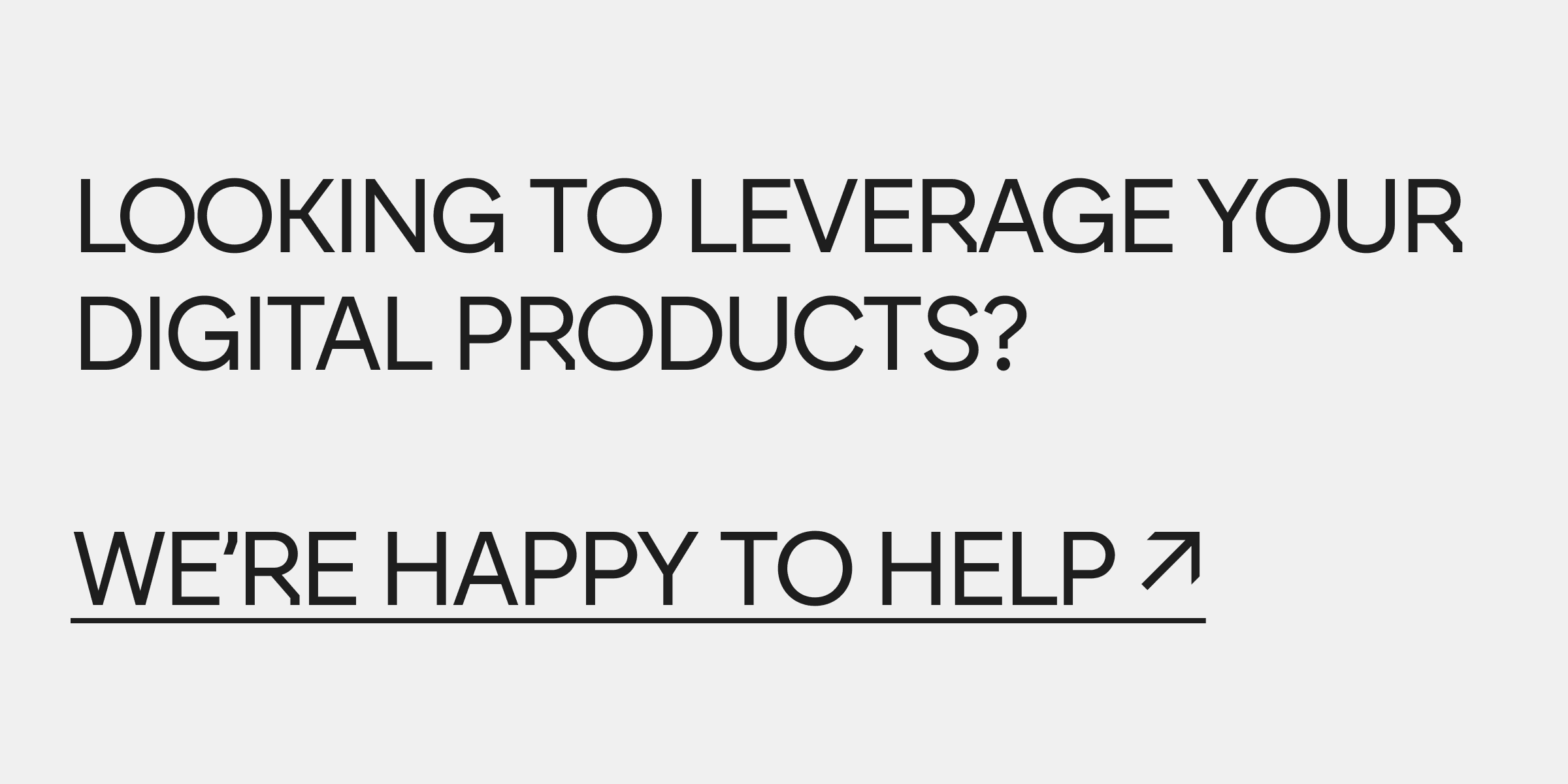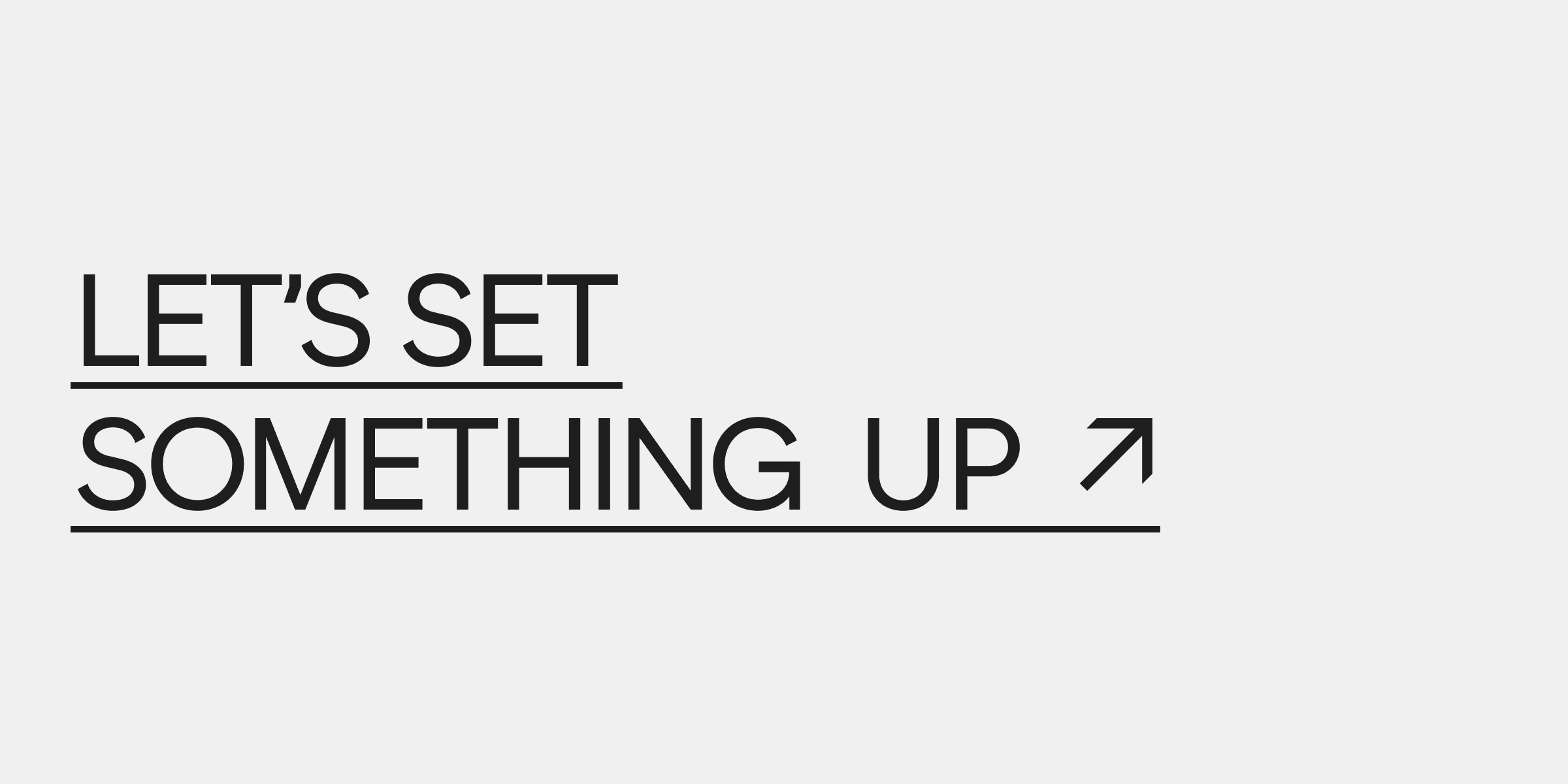When it comes to digital product development, success often hinges on the strength of initial concepts. The ideation phase stands as a crucial cornerstone in this process, serving as the launchpad for innovation and creativity. The importance of generating ideas during the ideation phase cannot be overstated, as it allows teams to brainstorm freely and prioritize quantity over quality.
As companies strive to meet consumer demands, mastering the art of ideation becomes increasingly vital. At Adchitects, we recognize the transformative power of this early stage in product development and have harnessed its potential to deliver exceptional results for our clients. It is essential to keep all the ideas generated during brainstorming sessions, as even the most surreal ideas can lead to innovative solutions if not discarded too early.
Throughout this article, we will explore the intricacies of the ideation phase, delving into its definition, benefits, and challenges. We will also examine various techniques associated with this critical stage and shed light on why Adchitects places such high importance on ideation in our product development journey.
The Design Thinking Process
The design thinking process is a creative problem-solving approach that helps teams develop innovative solutions by empathizing with users, defining problems, ideating solutions, prototyping, and testing. This iterative process encourages a holistic view, embracing uncertainty and ambiguity to consider all sides of a problem. By putting the end-user at the heart of all decision-making, design thinking helps teams create products and experiences that meet user needs and change lives.
At its core, the design thinking process is about understanding the people for whom we are designing. It starts with empathy, where teams immerse themselves in the users’ world to gain deep insights into their needs and challenges. This understanding forms the foundation for defining the problem clearly and accurately.
Once the problem is well-defined, the ideation phase begins. This is where teams generate a wide array of potential solutions, leveraging various ideation techniques to think creatively and expansively. The goal is to explore as many ideas as possible, without immediate judgment or constraints.
Prototyping follows ideation, where teams create tangible representations of their ideas. These prototypes are then tested with real users to gather feedback and refine the solutions. This iterative process of prototyping and testing ensures that the final product is not only innovative but also user-centric and effective.
By embracing the design thinking process, teams can navigate complex challenges and develop solutions that truly resonate with users, driving innovation and success in the digital product landscape.
What Is the Ideation Phase?
The ideation phase represents a critical juncture in the product development lifecycle, serving as the wellspring of innovation and creativity. During this stage, teams come together to generate, develop, and communicate new ideas that could potentially solve identified problems or meet specific needs in the market.
At its core, ideation involves a structured yet flexible approach to brainstorming and conceptualization. A productive ideation session is essential, emphasizing the importance of creating a conducive environment that fosters creativity and collaboration. Teams engage in various exercises and methodologies designed to stimulate creative thinking and encourage the free flow of ideas. The primary goal is to produce a wide array of potential solutions without immediate judgment or constraints.
Additionally, analyzing existing solutions during the ideation phase is crucial. This analysis helps identify feature gaps and understand audience expectations, which can inspire new ideas and foster innovation.

What Does the Ideation Phase Look at Adchitects?
We have refined our ideation phase to be a dynamic and collaborative process that sets the foundation for successful digital product creation. Our approach focuses on several key elements that ensure we deliver solutions tailored to our clients' unique needs.
Understanding Client Needs
We begin every ideation phase by prioritizing a deep understanding of our client's needs. It involves intensive discussions, research, and analysis to grasp the stated requirements, as well as the underlying challenges and opportunities our clients face. By establishing this solid foundation, we ensure that all subsequent ideas and concepts align with our client's goals and expectations.
A Flexible Timeframe for Optimal Results
The length of our ideation phase varies depending on project complexity and client requirements. Typically, it spans from one to three weeks. This flexible timeframe allows us to thoroughly explore possibilities without rushing the creative process or unnecessarily prolonging the project timeline.
Our Ideation Activities
During the ideation phase, we engage in a variety of activities designed to stimulate creativity and generate valuable insights.
Interactive Miro Sessions
We use Miro, a digital whiteboard platform, to facilitate collaborative brainstorming sessions with our clients. With Miro, clients get to express their needs and ideas more effectively.
Structured Workshops
Our team conducts targeted workshops that employ various ideation techniques. A popular ideation technique involves identifying and challenging the assumptions tied to a design challenge. In one exercise, clients pick their favorite mood board from a lineup to help define the project’s visual direction.
Additional Research
When necessary, we conduct supplementary market research, competitor analysis, or user studies to inform our ideation process and ensure our concepts are grounded in real-world insights.
Cross-Functional Collaboration
We bring together experts from different disciplines within Adchitects to provide diverse perspectives and innovative solutions.
Translating Ideas Into Actionable Concepts
The primary objective of our ideation phase is to transform abstract ideas and client needs into concrete, actionable concepts. We aim to do the following things.
- Generate a wide array of potential solutions that address the client's specific challenges.
- Identify innovative approaches that set our clients apart in their respective markets.
- Create a solid foundation for the subsequent design and development phases.
- Establish a shared vision between Adchitects and the client for the final product.
By the end of the ideation phase, we aim to have a clear direction for the project, supported by well-defined concepts that excite both our team and the client. It ensures smoother progression through the subsequent stages of product development, ultimately leading to a digital product that truly meets our client's needs.
What Ideation Techniques Do We Typically Use?
We employ a diverse array of ideation techniques to ensure comprehensive and innovative solutions for our clients. Each technique serves a unique purpose in our ideation process, contributing to a well-rounded understanding of the project landscape and potential solutions. The most popular ideation techniques are essential in the ideation phase as they help generate a broad set of ideas without judgment, fostering innovation and creativity within the design process.
Desk Research
Deep within industry publications and digital archives lies the foundation of our ideation process. We meticulously comb through existing literature, dissecting industry reports and academic studies to unearth valuable insights about market dynamics and emerging challenges.
The value of desk research lies not just in gathering information, but in synthesizing diverse sources to identify patterns and opportunities that might otherwise go unnoticed. We excel at turning raw ideas into actionable insights, drawing connections between seemingly unrelated data points to inspire innovative solutions.
Competition Analysis
Understanding the competition is crucial for developing unique and effective solutions. Our team conducts thorough analyses of competitors’ products, strategies, and market positions, emphasizing the importance of analyzing existing solutions during competitive research. We go beyond surface-level features to understand the underlying principles and choices that drive successful products.
Through focused ideation methods centered on competitive analysis, we help clients challenge assumptions about their market position and identify opportunities for innovation. We help them understand why certain approaches succeed while others fail.
Trend Research
Forward-thinking innovation requires intimate knowledge of emerging technologies and evolving user expectations. Our team members regularly engage in brainstorming sessions focused on emerging technologies and shifting user expectations, ensuring that our ideation process remains current and forward-thinking. We examine both broad industry trends and specific technical developments that might impact our clients' products, helping to eliminate uncertainty completely when planning for future developments.
Customer Surveys
Customer surveys represent a vital channel for gathering direct user feedback and insights from end users. When designing surveys, we craft dynamic conversations rather than simple question-answer formats, encouraging users to share detailed stories about their needs, frustrations, and desires.
Our carefully orchestrated questionnaires capture both hard metrics and nuanced personal insights, providing rich material for our ideation sessions. The integration of survey findings into our ideation process helps ensure that creative solutions remain grounded in actual user needs rather than assumptions.
In-Depth Interviews
Face-to-face conversations with users yield rich, detailed narratives impossible to capture with other research methods. Our seasoned user experience specialists guide participants along carefully crafted discussion paths, unearthing complex insights and unexpected feedback.
As interviewees share personal stories and challenges, they reveal subtle nuances that fuel innovative thinking. Each conversation adds new dimensions to the ideation process, challenging established assumptions while pointing toward fresh solutions.
User Experience Audit
User experience audit is a systematic evaluation of a digital product's usability, functionality, and overall user journey. Through detailed analysis of user flows, interface elements, and pain points, we can identify opportunities to enhance satisfaction, streamline interactions, and boost conversion rates.
Accessibility Audit
An accessibility audit evaluates a digital product's usability for people with disabilities, checking compliance with WCAG guidelines and industry standards. By identifying and addressing barriers like poor contrast, missing alternative text, or keyboard navigation issues, we help ensure a product is usable by everyone while also reducing legal risks.
Heatmap Analysis
Heatmap analysis visualizes user behavior on a website by tracking where visitors click, scroll, and focus their attention. By studying these interaction patterns through color-coded overlays, we can identify which elements attract engagement, where users get stuck, and how to optimize page layouts for better conversion and user experience.

Enhancing the Ideation Process
Enhancing the ideation process involves using various techniques to generate as many ideas as possible, without focusing on quality or feasibility. This stage is a creative and freeing phase for teams, allowing them to think of out-of-the-box ideas and explore solutions. To enhance the ideation process, teams can use popular ideation techniques such as brainstorming, mind mapping, SCAMPER, and reverse brainstorming. These techniques prioritize quantity over quality, allowing teams to move past the first good ideas and find novel ones.
By using these techniques, teams can generate a large number of ideas, which can then be evaluated and refined in later stages. The ideation process is an iterative process, and teams may need to revisit earlier stages based on new insights or challenges. By embracing this iterative process, teams can develop innovative solutions that meet user needs and resolve frustrations.
In addition to using ideation techniques, teams can also enhance the ideation process by creating a conducive environment that encourages creativity and imagination. This can involve setting the right tone, creating a comfortable and relaxed atmosphere, and encouraging diverse perspectives and creativity. By doing so, teams can create a safe space for idea generation, where team members feel comfortable sharing their ideas and building on each other’s suggestions.
Furthermore, teams can also enhance the ideation process by using tools and techniques such as idea mapping, affinity diagramming, and dot voting. These tools can help teams organize and prioritize ideas, identify patterns and themes, and make decisions about which ideas to pursue.
Overall, enhancing the ideation process involves using a combination of techniques, tools, and strategies to generate as many ideas as possible, and to create a conducive environment that encourages creativity and imagination. By doing so, teams can develop innovative solutions that meet user needs and change lives.
What Are the Main Benefits of the Ideation Phase?
While many see ideation simply as a creative exercise, its true value extends far beyond generating novel concepts. When executed with precision and purpose, ideation creates a foundation for product success, drives team alignment, and unlocks opportunities that routine development processes often miss.
We have identified several key advantages that make the ideation phase indispensable for creating exceptional digital products. By understanding these benefits, teams can harness the full potential of their creative sessions and transform abstract concepts into market-leading solutions.
Generating Ideas Effectively
The ideation phase stands as a cornerstone of the design thinking process, providing teams with a structured yet flexible framework for idea generation. Through carefully orchestrated ideation sessions, teams can tap into their collective creativity to generate a wealth of creative ideas that fuel innovation. The key success factors lie in fostering an environment where team members feel empowered to share their thoughts freely, whether they're conventional solutions or potentially disruptive ideas that challenge the status quo.
A successful ideation session goes beyond simple brainstorming by encouraging participants to challenge existing ideas and fundamental assumptions about the problem at hand. It often leads to breakthrough innovations, as teams discover that even seemingly bad ideas can spark conversations that lead to unexpected solutions. The creative process thrives on this freedom to explore multiple possibilities without immediate judgment or criticism.
Fueling Innovative Solutions
The ideation stage serves as a powerful catalyst for finding creative solutions to complex problems. Modern ideation techniques and sophisticated idea generation tools enable teams to build upon existing ideas while simultaneously exploring new territories. Teams engaged in a more nuanced ideation process learn to treat ideas individually while maintaining sight of the broader project objectives.
By employing focused ideation methods, teams can systematically explore different incremental improvement ideas while remaining open to more transformative possibilities. The exchange of ideas during these sessions often leads to unexpected combinations and innovations that might never have emerged from more conventional thinking processes.
Understanding Client Needs
A well-executed ideation phase dramatically improves teams' understanding of client requirements through continuous dialogue and exploration. By implementing focused ideation methods that align with specific project goals, teams can dig deeper into the underlying challenges their clients face. It helps teams challenge assumptions about user needs while evaluating ideas against real-world constraints.
The practice of communicating ideas and managing the flow of creative thinking leads to better prioritization of potential solutions. Teams learn to balance ambitious visions with practical limitations, resulting in ideas that are both innovative and implementable. This deeper understanding of client needs ensures that the final solutions tackle fundamental challenges in meaningful ways.
What Are the Main Challenges of the Ideation Phase?
Even the most promising ideation sessions can encounter significant hurdles that threaten to derail innovation. While generating creative solutions might appear straightforward, the reality involves navigating complex obstacles that can stifle creativity, derail momentum, and compromise outcomes.
We have witnessed how these challenges can impact teams across industries and project types. Understanding and anticipating these potential pitfalls becomes crucial for maintaining productive ideation sessions and ensuring valuable outcomes.
Lack of Creativity
One of the most significant challenges in the ideation process is maintaining creative momentum throughout the project. Teams often struggle to break free from same thinking patterns that limit innovation, finding themselves stuck in conventional approaches rather than pushing boundaries with more complex ideas.
Successful brainstorming sessions require an environment where participants feel safe sharing incomplete or uncertain thoughts, knowing they will have support in developing these raw ideas into more refined concepts. Creating this atmosphere of psychological safety while maintaining productive forward momentum requires skilled facilitation and consistent encouragement.
Lack of Evaluation
A badly managed ideation process often suffers from insufficient evaluation mechanisms, making it difficult to identify and develop the most promising concepts. Teams struggle with effectively communicating ideas across different stakeholders and departments, leading to misunderstandings and missed opportunities. The challenge of prioritizing ideas becomes particularly acute when dealing with a large volume of concepts generated during intensive brainstorming sessions.
Implementing robust evaluation methods requires a structured, multi-tiered approach. We recommend establishing clear scoring criteria that examine business viability, technical feasibility, and user value for each concept.
Lack of Documentation
The process of documenting and tracking idea-related information becomes increasingly complex as concepts evolve and combine. Teams need robust systems for managing ideas across different stages of development, ensuring that valuable insights and creative solutions don't get lost in the transition from concept to implementation.
At Adchitects, we combine project management tools with detailed documentation to track each idea's progress and evolution. Every concept gets its own task board with attached documentation, making it simple to follow development stages while preserving important context and feedback.
How Can You Prepare for the Ideation Phase With Adchitects?
Before we dive into our first brainstorming session, let's make sure we're set up for success. While our team will handle the heavy lifting, there are a few simple ways you can help us understand your vision better.

Share Your Goals
What dreams do you have for your product? Tell us about your challenges, your aspirations, and what success looks like to you. Don't worry about having everything figured out. We're here to help shape those ideas into clear objectives. Even rough thoughts about where you want to go will give us valuable direction.
Give Us Context
You know your business better than anyone. Share with us what's working well, what isn't, and any relevant background about your market. Have you tried similar solutions before? What did your customers say? Every bit of insight helps us understand your unique situation.
Come With an Open Mind
The best innovations often emerge from unexpected places. While we will certainly respect your experience and industry knowledge, we might challenge some assumptions or explore unconventional approaches. Trust us to guide you through this process. We have helped many clients discover exciting new possibilities they hadn't considered before.
Ideas Are the Foundation That Digital Products Need To Succeed!
The ability to generate and implement innovative ideas has become a critical differentiator for successful products. With a well-planned ideation process, you should find it easier to transcend conventional thinking patterns and develop truly transformative solutions.
Frequently Asked Questions
Who Is Ideation For?
Ideation serves as an essential tool for any organization or team committed to innovation and problem-solving in the digital space. While particularly valuable for product teams, designers, and developers engaged in design thinking projects, the principles and techniques of ideation can benefit stakeholders at all levels of an organization. The process helps bridge gaps between technical expertise and creative thinking, enabling teams to develop more comprehensive and effective solutions to complex challenges.
Is Brainstorming a Kind of Ideation Phase?
While brainstorming sessions form an integral part of the ideation process, they represent just one component of a more nuanced ideation process. Modern ideation encompasses a broader spectrum of techniques and methodologies that extend beyond traditional brainstorming. These include structured workshops, design thinking exercises, collaborative sketching sessions, and various idea generation tools. The combination of these different approaches allows teams to explore problems and solutions from multiple angles, leading to more robust and innovative outcomes.
Does Ideation Work for Any Kind of Digital Product?
The versatility of the ideation process makes it applicable to virtually any digital product development endeavor. The key lies in adapting ideation techniques to match the specific requirements and constraints of each project. Whether developing a simple mobile application or creating a complex enterprise system, the principles of creative thinking and collaborative idea generation remain valuable. Teams can adjust the focus and intensity of their ideation sessions to align with project scope, technical constraints, and business objectives while maintaining the core benefits of structured creative exploration.
Does Ideation Have Any Stages?
The ideation process follows a natural progression that helps teams develop ideas, and then aids them in moving from initial concept generation to practical implementation. Beginning with open-ended idea generation, teams explore possibilities without immediate judgment or limitation. As concepts begin to take shape, the process moves into a more focused development phase where promising ideas receive additional attention and refinement. The evaluation stage introduces practical considerations and constraints, helping teams identify the most viable solutions.
Following evaluation, teams enter a critical phase of selection and prioritization, where they must balance innovation with feasibility. Finally, the implementation planning stage bridges the gap between creative ideation and practical execution. Throughout these stages, teams maintain flexibility to revisit and refine ideas as new insights emerge, ensuring that the final solutions represent the best possible combination of innovation and practicality.
What Makes the Ideation Phase at Adchitects So Unique and Important?
Our approach to ideation stands out through its careful balance of structure and flexibility. We recognize that not all ideas will succeed, but we believe in creating an environment where good ideas can flourish and evolve. Our team employs a variety of ideation techniques and creative thinking exercises to challenge assumptions and explore possibilities from multiple angles.






